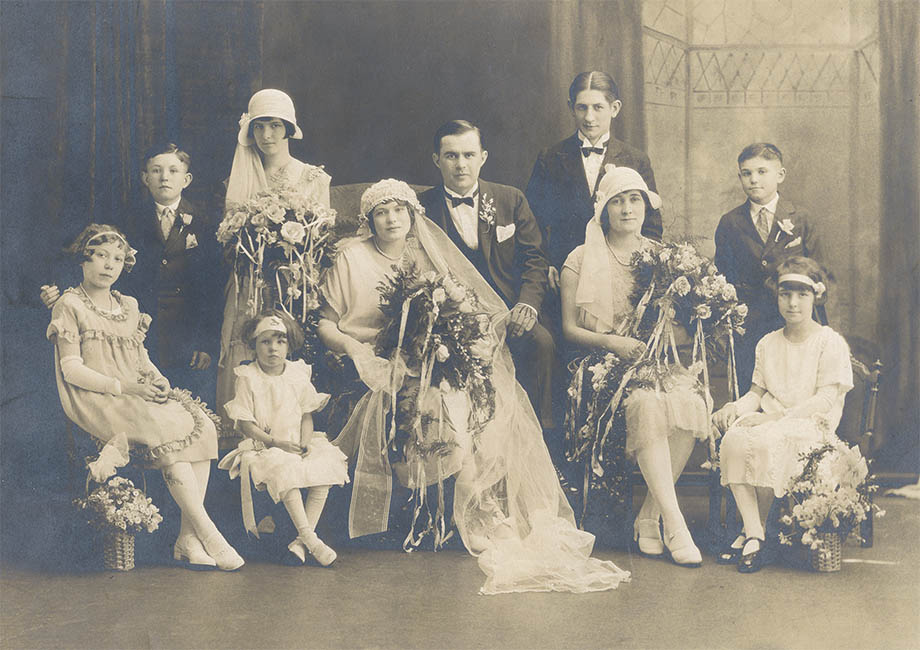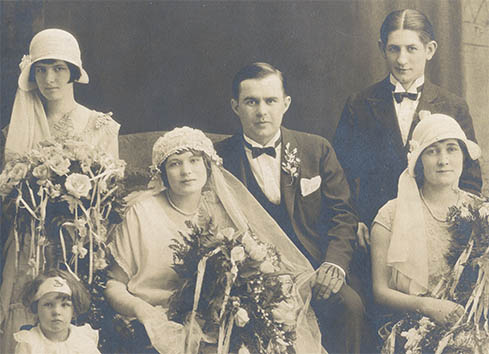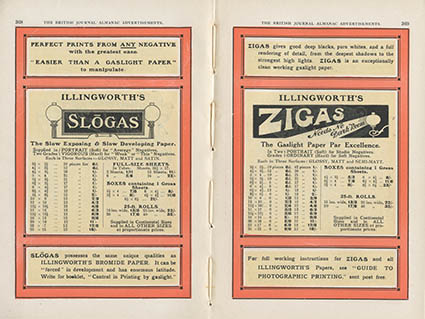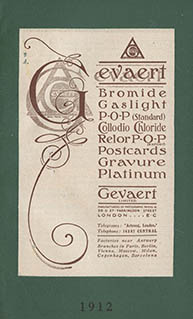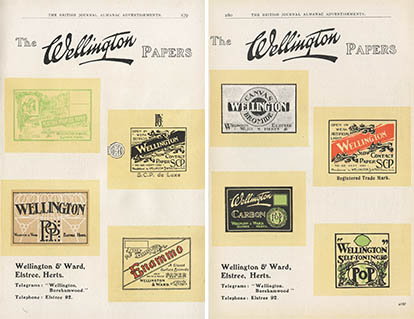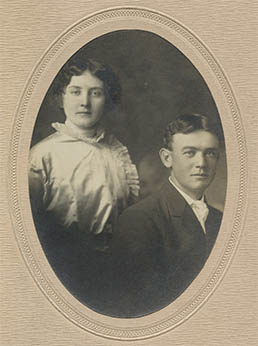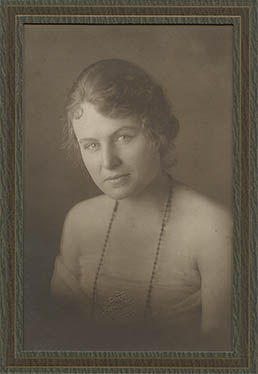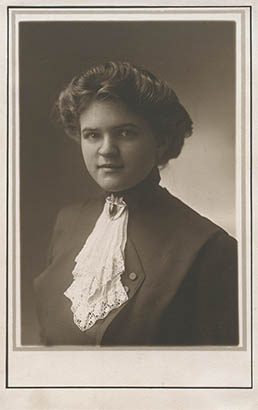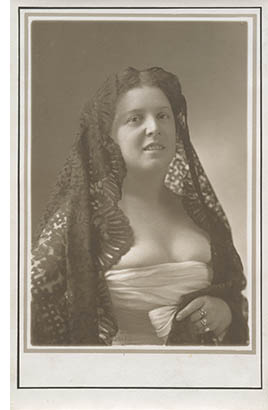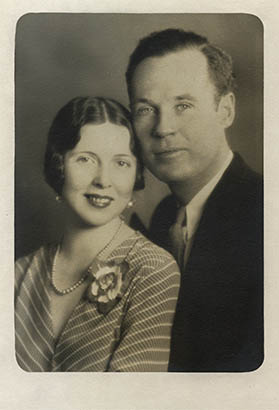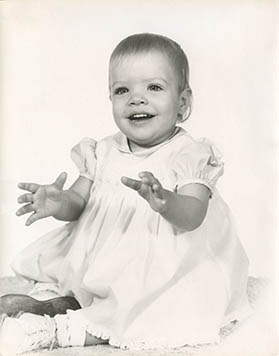This is a detail of a poorly unmounted, badly mirrored1 sepia-toned silver gelatin print. Based on the womens’ cloche hats and the mens short, Brilliantine-slicked hair it is rather obviously from the 1920s. It is in every way a winning wedding photo. Here is a detail:
After the good doctor R. L. Maddox first described the silver gelatin process in 1871 the dry-plate replaced the wet-plate almost overnight – an instant revolution in photography. The silver gelatin print, however, would take quite a bit longer to gain acceptance.
Gelatin silver bromide print paper was being commercially manufactured as early as 1874. This was followed by a number of improvements: gelatin silver chloride paper (1881), Silver chloride printing-out paper (1882), gelatin chloro-bromide paper (1883) and gaslight paper (1885). However, it wasn’t until a baryta layer (a coating of gelatin and barium sulfate that provided a white, smooth surface) was added in 1894 that silver gelatin print began truly replacing the albumin print.3 Here are a few early 20th century ads showing the range of papers available:
By the early 1900s, with the rise of the snapshot, professional studios replaced the CDV and cabinet card with silver gelatin prints often elaborately mounted in embossed cardboard and glassine folders:
Here are some beauties from the jazz age:
Concerning the sister on the right - really? Further commentary seem rather pointless4
Finally, there’s this beautiful young lady, ca.1967:
Nina Marie, negative no. 01044
Over the last 120 or so years the silver gelatin print has undergone continuous tweaks and improvements, including polyethylene resin-coated (RC) paper in the 1970s and variable-contrast (VC) paper in the 1980s. Even today, with the widespread availability of inkjet printers, the process is still used for B&W prints.
1. Silver mirroring is a process by which Ag2S (silver sulfide) is formed on the print surface by the migration of Ag+ ions from the emulsion, creating a characteristic metallic-blue sheen. It is a common occurrence with both glass plate negatives and paper prints between 1900-1930. For more than you probably care to know see: Giovanna Di Pietro, Giovanni. “Silver Mirroring on Silver Gelatin Glass Negatives.” Diss. Universität Basel, 2002, which is available here.
2. For reference see: The Shining. Stanley Kubrick, dir. Warner Bros, 1980:
3. For more detail on photographic printing see Silverprint’s wonderful historic review.
4. But your humble narrator will comment anyway. There’s décolletage then there’s just trying too hard. However take a look at the eyes of the sister on the left, I’ll bet you anything she was the riot grrl in this family.
13 Feb 2011, updated 24 Feb 2012 ‧ Photography
